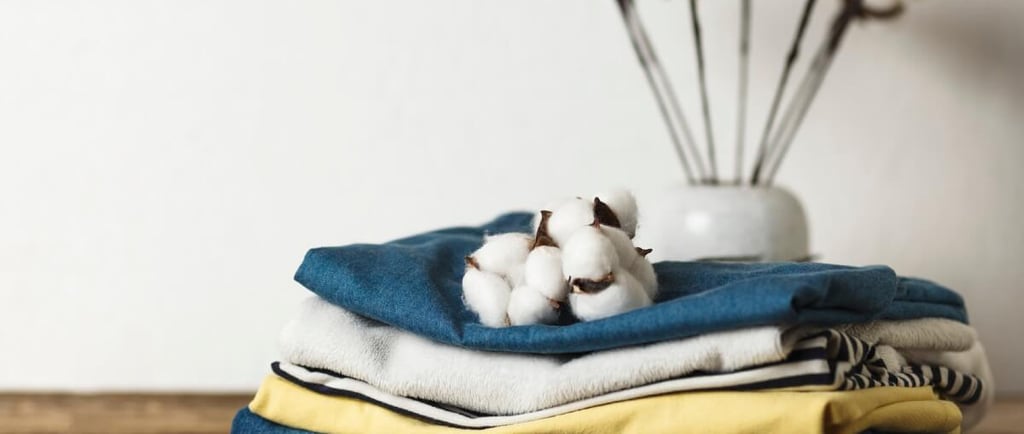Eco-Friendly Fabrics: A Guide to Green Fashion Choices
the world of sustainable style with our comprehensive guide to eco-friendly fabrics! Learn how to make environmentally conscious fashion choices that are both stylish and sustainable. From organic cotton to recycled polyester, we’ll explore the best green fabrics available and their benefits for the planet. Whether you’re looking to build a more eco-friendly wardrobe or simply curious about green fashion, this guide will provide you with the knowledge you need to make informed, eco-conscious decisions.
Ms. Kei
7/10/20243 min read


Eco-Friendly Fabrics: A Guide to Green Fashion Choices
In a world increasingly concerned with sustainability, eco-friendly fabrics have emerged as a pivotal choice for conscious consumers looking to reduce their environmental footprint. From organic cotton to innovative recycled materials, there are numerous options available that promote ethical practices and support a healthier planet. If you're curious about making more sustainable fashion choices, here’s a comprehensive guide to eco-friendly fabrics and how they contribute to green fashion.
1. Organic Cotton
Organic cotton is grown without the use of synthetic pesticides or fertilizers, promoting healthier soil and reducing water consumption compared to conventional cotton farming. It also eliminates harmful chemicals from entering the ecosystem and minimizes the impact on farmers' health.
Benefits:
Reduced Environmental Impact: Lower water usage and no toxic chemicals.
Healthier for Farmers: Safer working conditions and improved health outcomes.
Natural Breathability: Comfortable and suitable for various clothing types.
Usage: Organic cotton is versatile, used in everything from t-shirts and jeans to bed linens and towels.
2. Hemp
Hemp is a fast-growing plant that requires minimal water, pesticides, or synthetic fertilizers to thrive. It's known for its durability and versatility, offering a sustainable alternative to traditional fabrics.
Benefits:
Sustainable Cultivation: Requires little water and grows quickly.
Durable and Strong: Long-lasting with natural resistance to mold and UV rays.
Breathable: Ideal for both warm and cool climates.
Usage: Hemp is used in clothing, accessories, and even home textiles like curtains and upholstery.
3. Bamboo
Bamboo fabric is derived from bamboo grass, which grows rapidly without the need for pesticides or irrigation. It’s known for its soft texture and breathability, making it a popular choice for eco-conscious consumers.
Benefits:
Fast-Growing: Rapid growth with minimal environmental impact.
Soft and Comfortable: Luxuriously soft with natural moisture-wicking properties.
Biodegradable: Decomposes naturally without releasing harmful pollutants.
Usage: Bamboo fabric is used in a variety of clothing items, including shirts, socks, and underwear.
4. Recycled Polyester
Recycled polyester is made from post-consumer plastic bottles or discarded polyester garments. It reduces the need for new petroleum-based fibers and helps divert plastic waste from landfills and oceans.
Benefits:
Resource Conservation: Reduces energy consumption and reliance on virgin polyester.
Waste Reduction: Repurposes plastic waste into valuable textiles.
Versatility: Performs like traditional polyester with added sustainability benefits.
Usage: Recycled polyester is used in activewear, outerwear, and various apparel items.
5. TENCEL™ (Lyocell)
TENCEL™ is a branded lyocell fiber made from sustainably sourced wood pulp, typically from eucalyptus or oak trees. The production process is eco-friendly, using a closed-loop system that recycles solvents and minimizes waste.
Benefits:
Sustainable Sourcing: Derived from renewable wood sources.
Water Efficiency: Requires less water compared to cotton production.
Soft and Breathable: Luxuriously smooth and comfortable on the skin.
Usage: TENCEL™ is used in clothing, bedding, and home textiles due to its softness and eco-friendly credentials.
6. Wool
Wool is a natural fiber produced from sheep, goats, and other animals. When sourced responsibly, wool can be sustainable, renewable, and biodegradable, offering insulation and comfort across various climates.
Benefits:
Renewable Resource: Shearing does not harm the sheep, allowing wool to regenerate.
Insulating Properties: Naturally regulates temperature and moisture.
Long-Lasting: Durable and biodegradable, reducing environmental impact.
Usage: Wool is used in sweaters, coats, and other cold-weather garments.
7. Linen
Linen is derived from the flax plant and is one of the oldest known textiles. It requires minimal water and pesticides to grow, making it highly sustainable. Linen fabric is breathable, lightweight, and biodegradable.
Benefits:
Sustainable Cultivation: Requires little water and grows in poor soil conditions.
Breathable and Cool: Ideal for warm climates due to its moisture-wicking properties.
Longevity: Gets softer and more comfortable with each wash.
Usage: Linen is used in summer clothing, bedding, and home textiles.
8. Upcycled and Vintage Fabrics
Upcycled fabrics involve transforming pre-existing materials, such as vintage clothing or textile waste, into new garments. This reduces waste, conserves resources, and promotes creativity in fashion design.
Benefits:
Waste Reduction: Gives new life to discarded textiles.
Unique and Creative: Each piece is one-of-a-kind, fostering individual style.
Environmental Impact: Minimizes the need for new raw materials and energy-intensive production.
Usage: Upcycled fabrics are used in sustainable fashion collections and artisanal clothing lines.
Tips for Choosing Eco-Friendly Fabrics:
Research Brands: Look for brands committed to sustainable practices and transparency in sourcing.
Check Certifications: Look for certifications such as GOTS (Global Organic Textile Standard) or OEKO-TEX® Standard 100.
Quality Over Quantity: Invest in timeless pieces made from durable eco-friendly fabrics that will last longer.
Care Instructions: Follow care guidelines to extend the lifespan of your garments and reduce environmental impact.
Conclusion
Choosing eco-friendly fabrics is a powerful way to support sustainable fashion practices and reduce your environmental footprint. By opting for organic cotton, hemp, bamboo, recycled polyester, TENCEL™, wool, linen, and upcycled/vintage fabrics, you contribute to a healthier planet while enjoying stylish and comfortable clothing. Incorporate these fabrics into your wardrobe and make a positive impact on the future of fashion.
